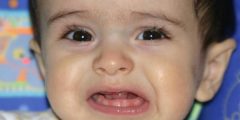Where to put compresses for children?
Placing cold compresses under the armpits and between the thighs is a common first aid method used in the event of a high body temperature or hyperthermia. In addition, this method is used in the event that the child’s temperature rises as a result of some external factors such as Exercising or when exposed to high temperature for a long period of time. The child’s body temperature can be lowered in cases of fever by placing cold compresses on some areas where the blood vessels are close to the surface of the skin, such as the wrist, forehead, and foot, in order to cool the child’s body. It should also be Note the necessity of not exposing the child to cold water, ice, or massaging the child’s skin with alcohol. This causes his body temperature to rise, and it is also advised that the child not wear thick clothes and not cover him with heavy covers if he suffers from chills.
Other methods can be followed to reduce heat
There are some other methods that contribute to lowering body temperature, and the following is a statement of these methods:
- Drink cold liquids; As high body temperature accelerates dehydration, it is therefore recommended to drink a sufficient amount of cold fluids to keep the body hydrated, which reduces the chance of dehydration, in addition to this may help calm the body.
- Make sure that the child feels comfortable and does not feel too cold. It is also recommended that a child with a fever not wear warm clothes.
- Cover the child with light covers.
- Expose the child to air by opening windows.
Read also:Signs of delayed mental development in children
Reasons to see a doctor
A child's high temperature may not require a doctor's visit in all cases, but in some cases a fever may be a sign of some serious health disorders. Below we show some cases that require a doctor's visit:
- The child continues to cry and is unable to calm him down.
- The child's temperature rises to 38 degrees Celsius or more in children under 3 months of age, as fever in infants may in some cases indicate the presence of a serious infection.
- The child's temperature rises to 38 degrees Celsius and continues for more than one day in children under two years of age.
- The child's temperature rises to 38 degrees Celsius and continues to rise for more than 3 days in children over two years of age.
- Recurrence of the child’s temperature exceeding 40 degrees Celsius, regardless of the child’s age.









